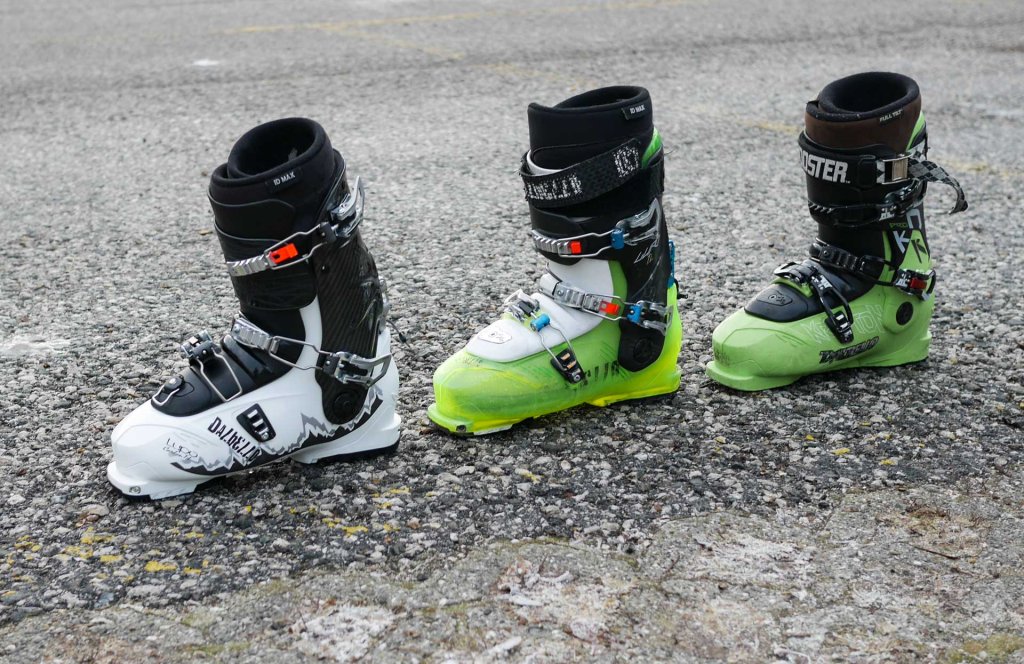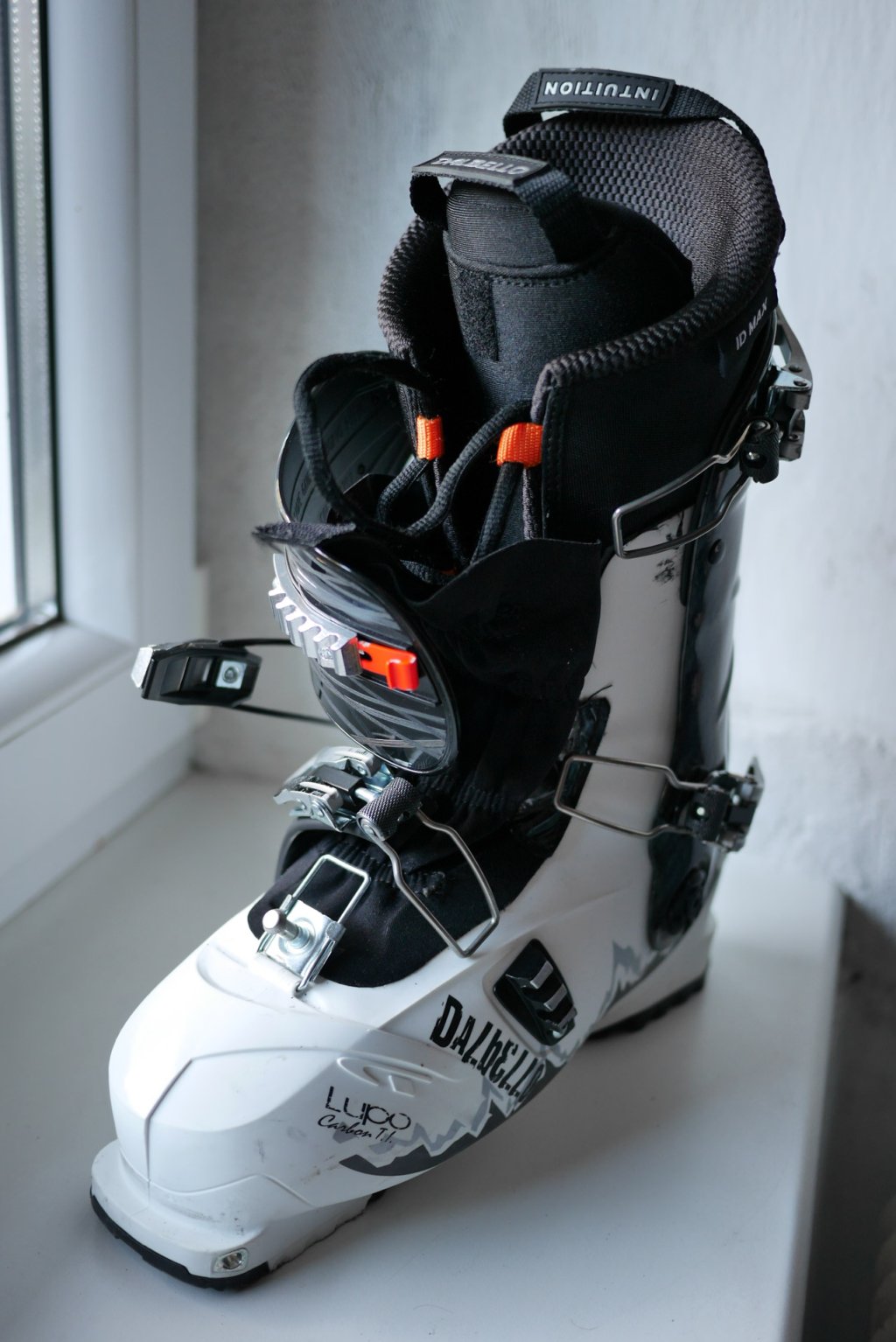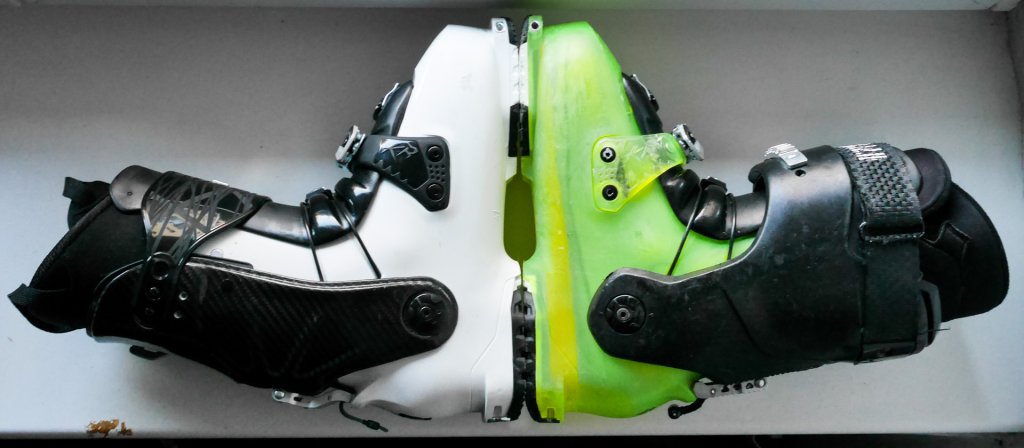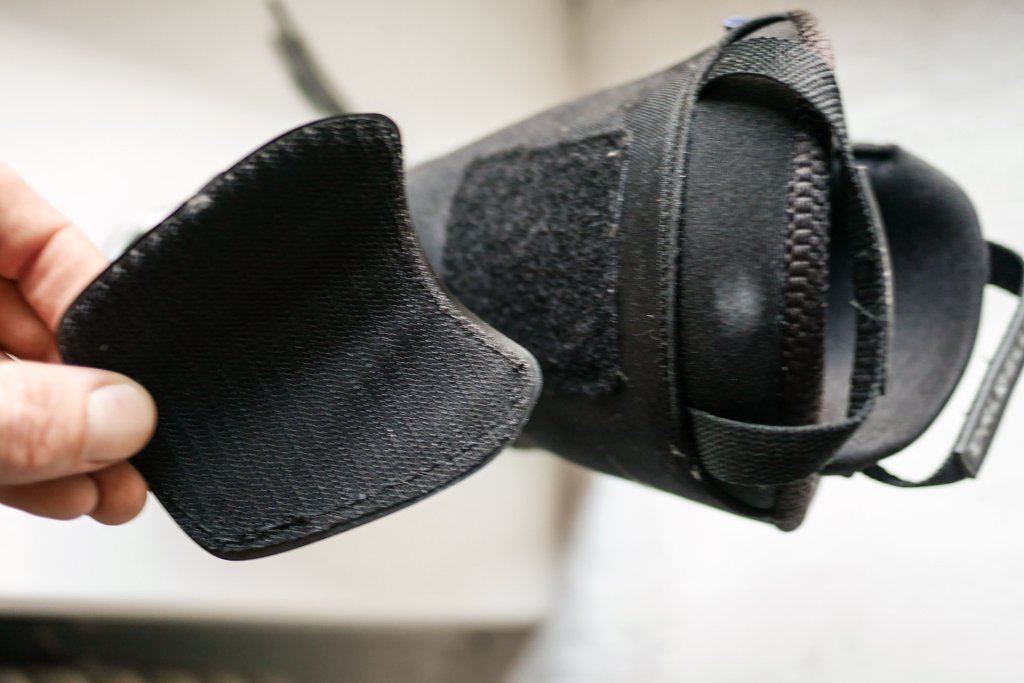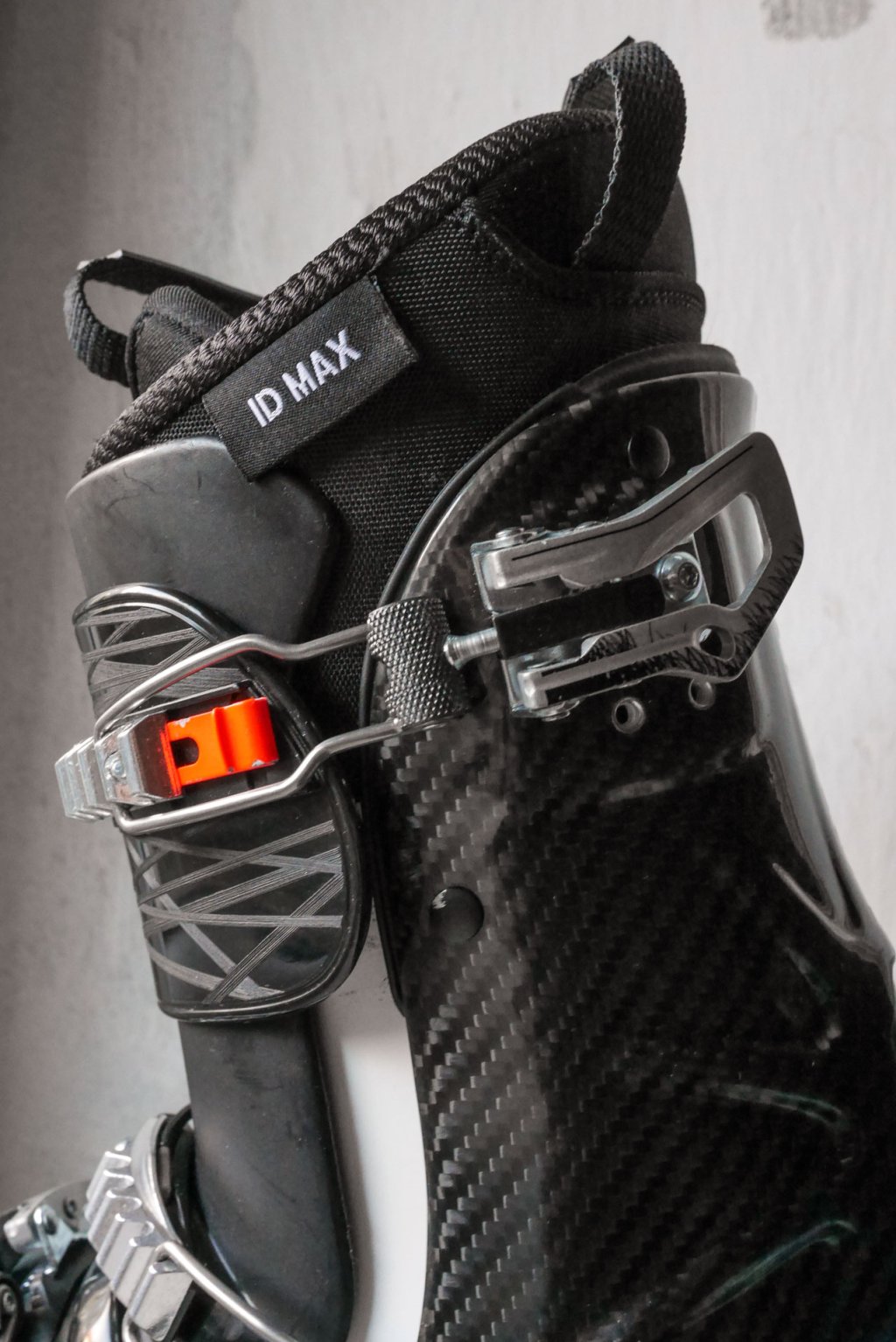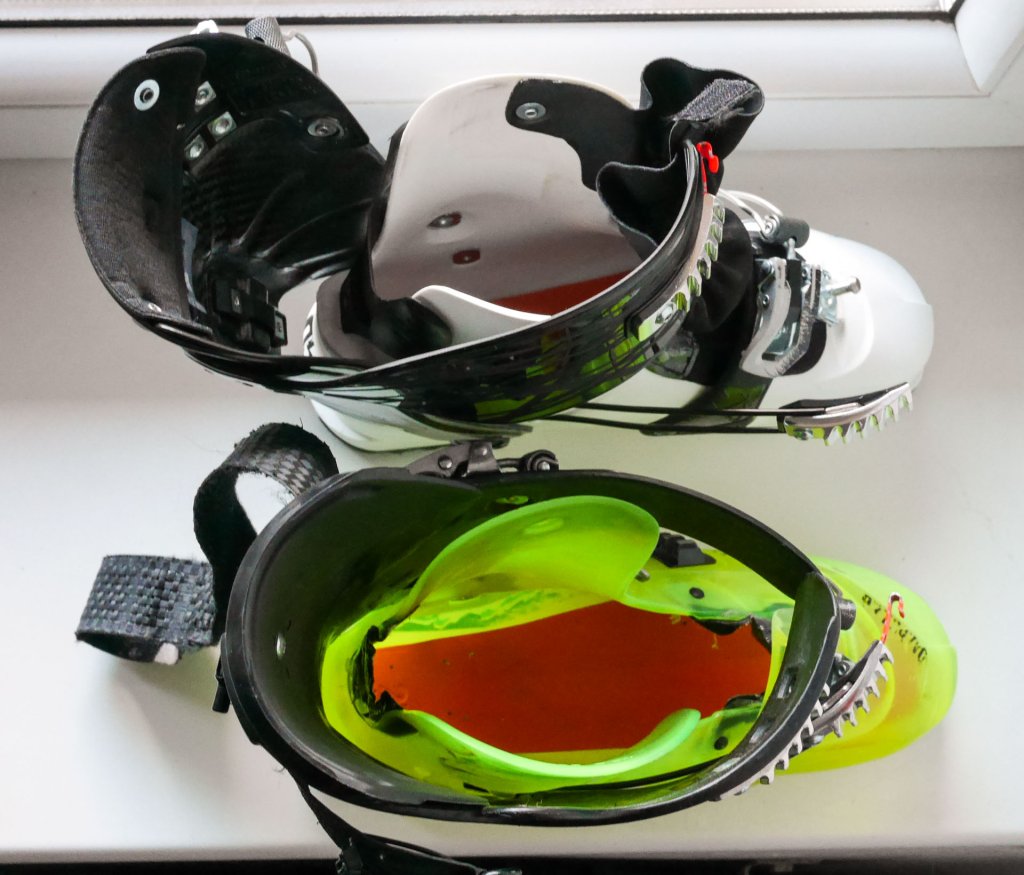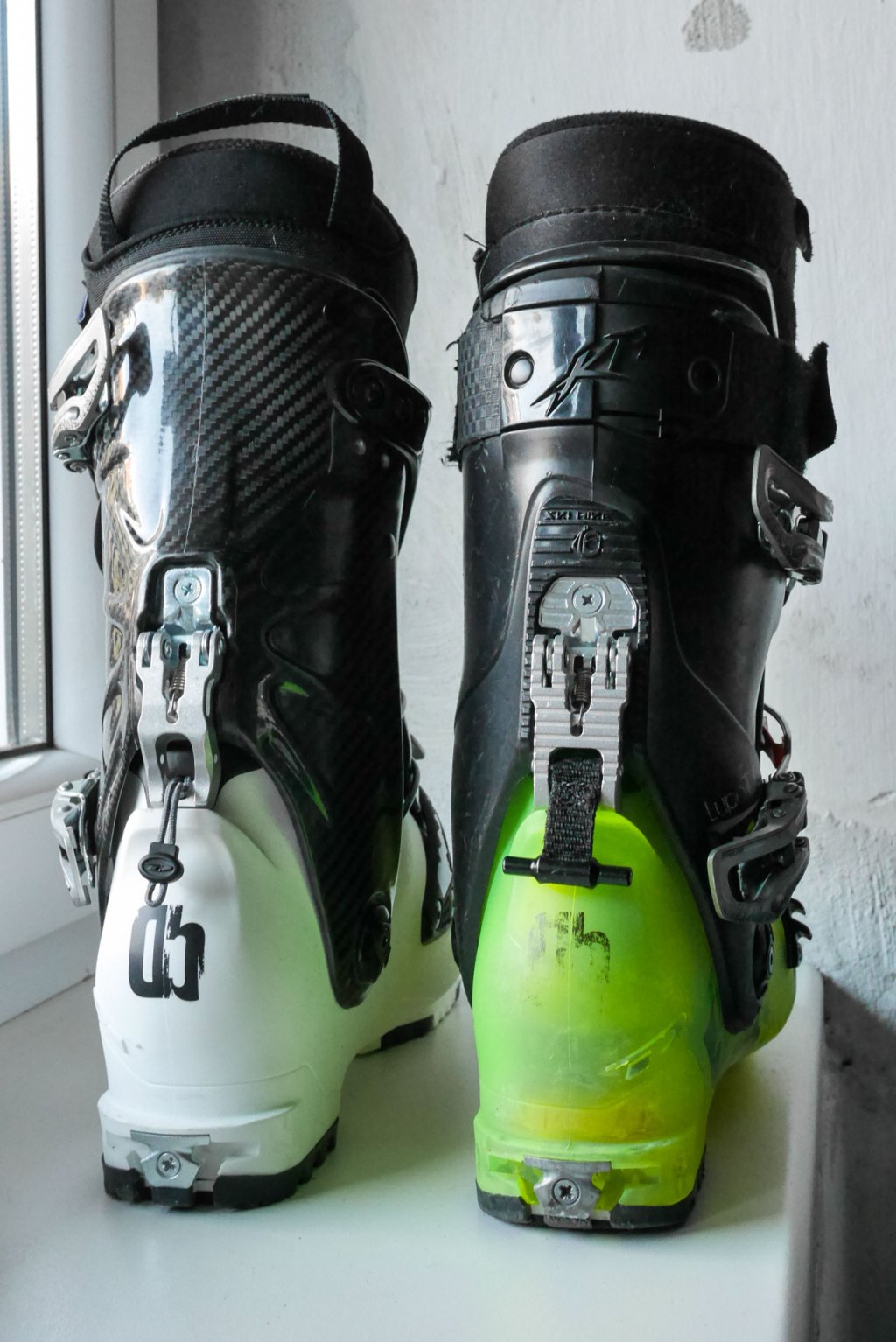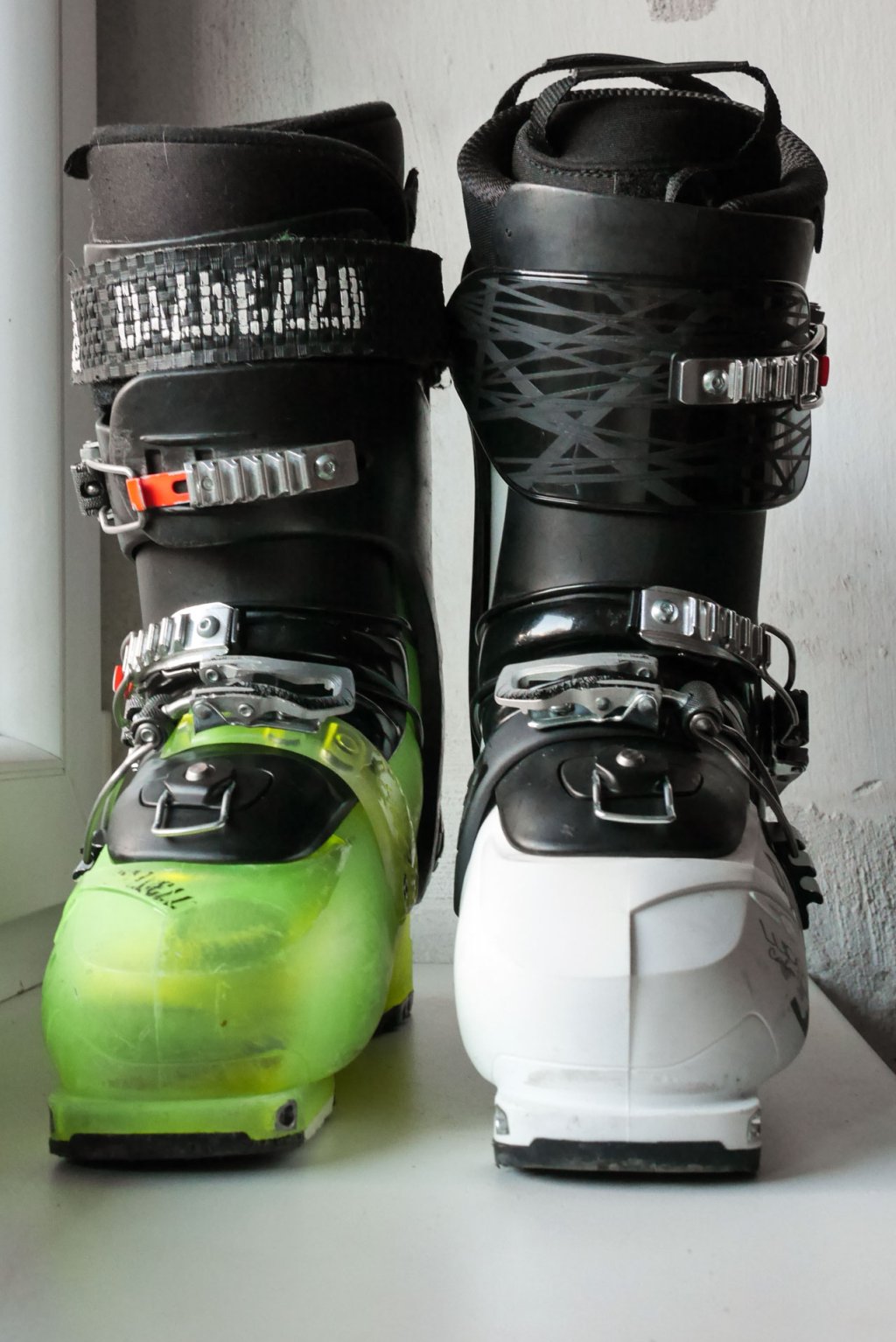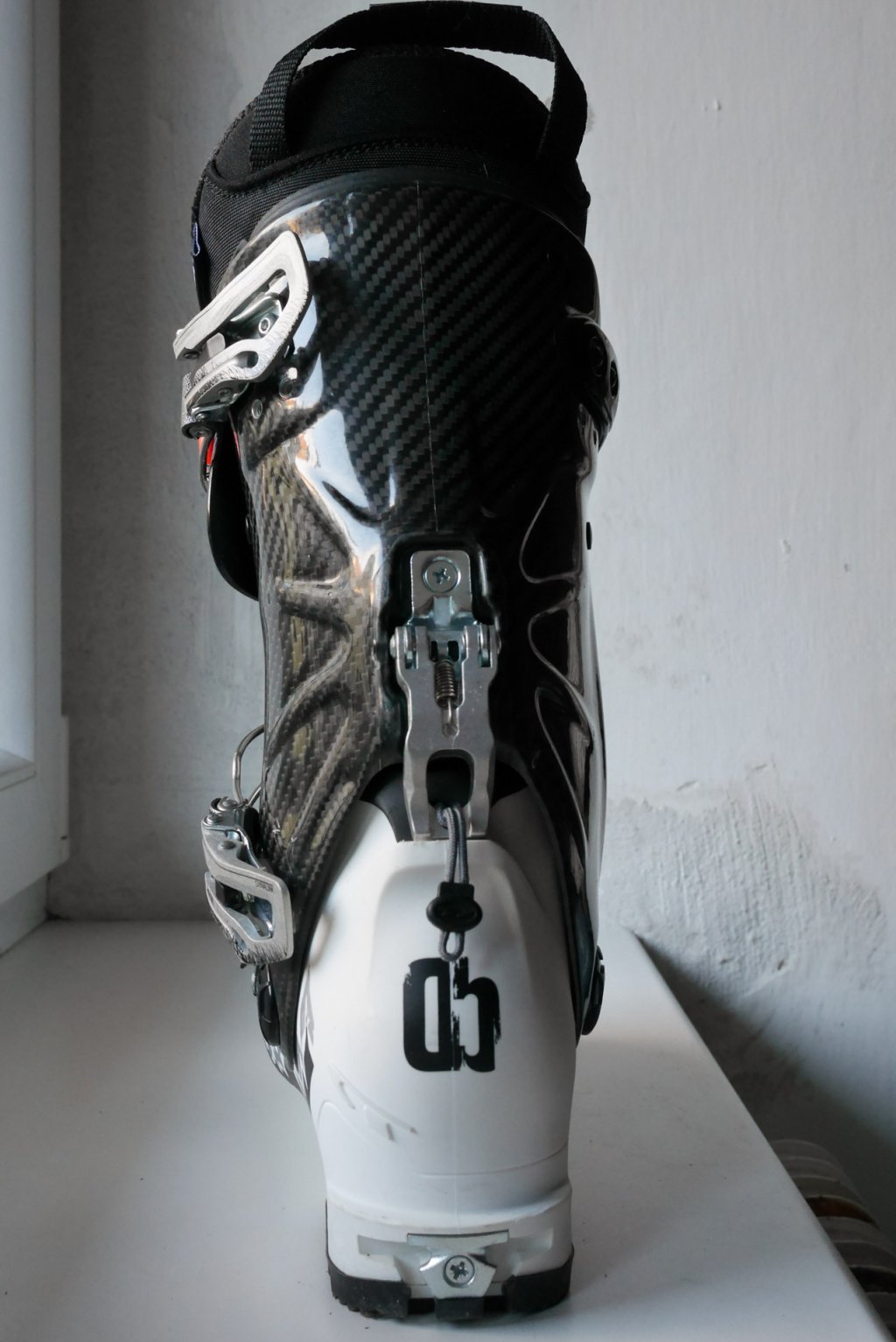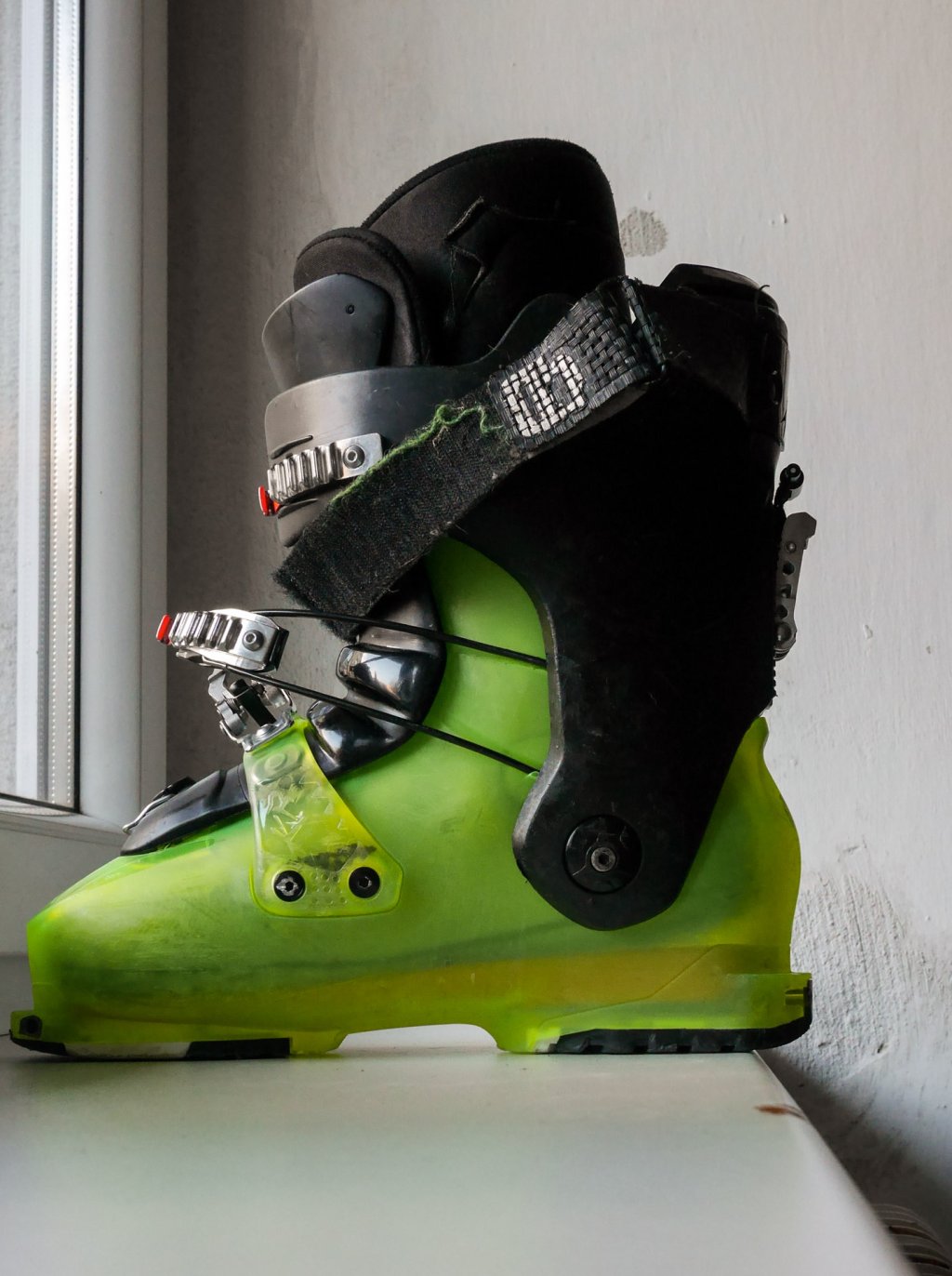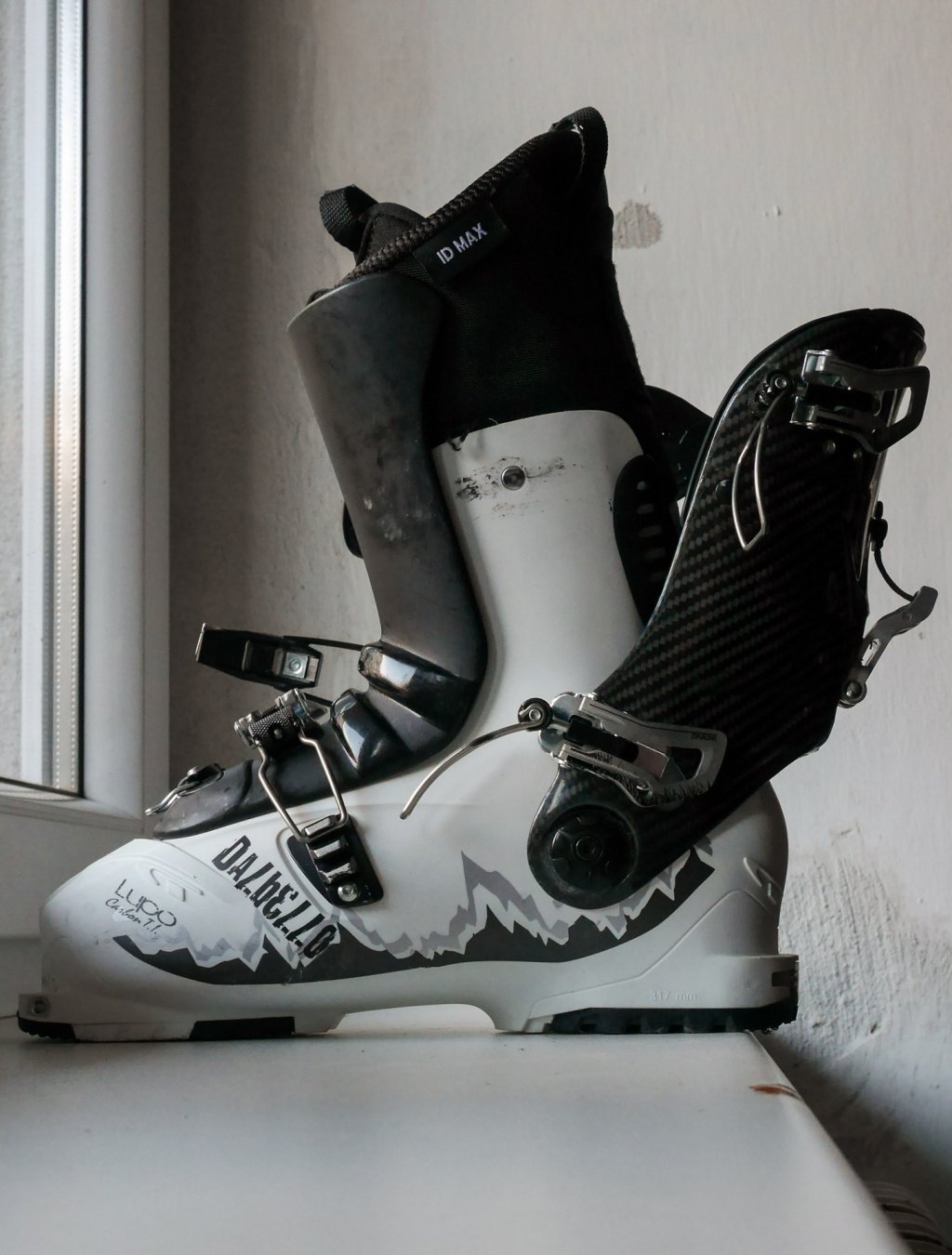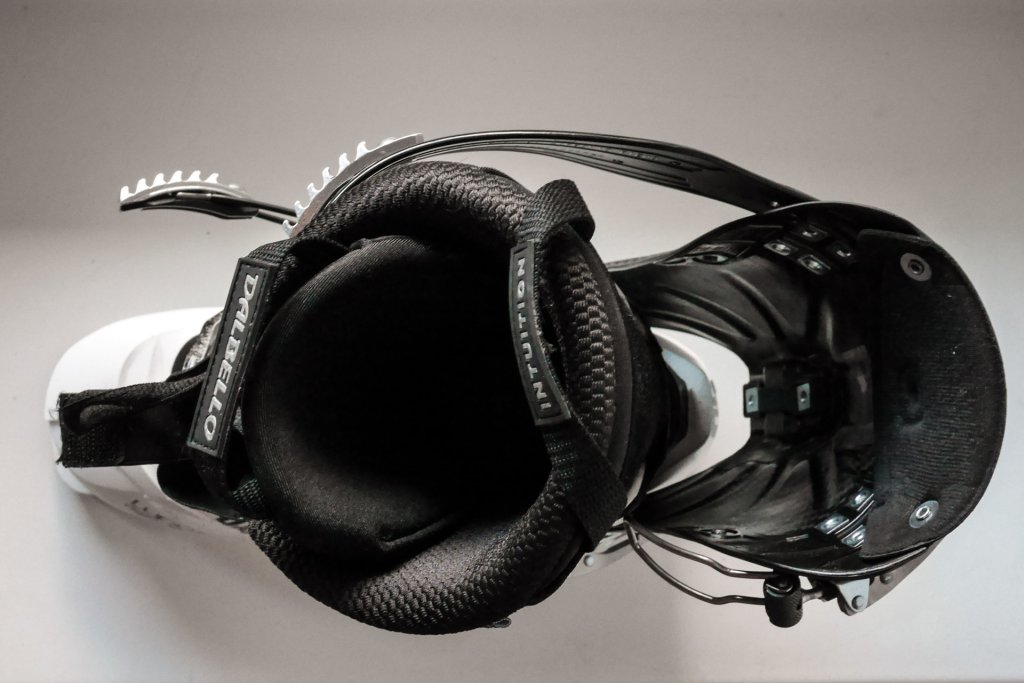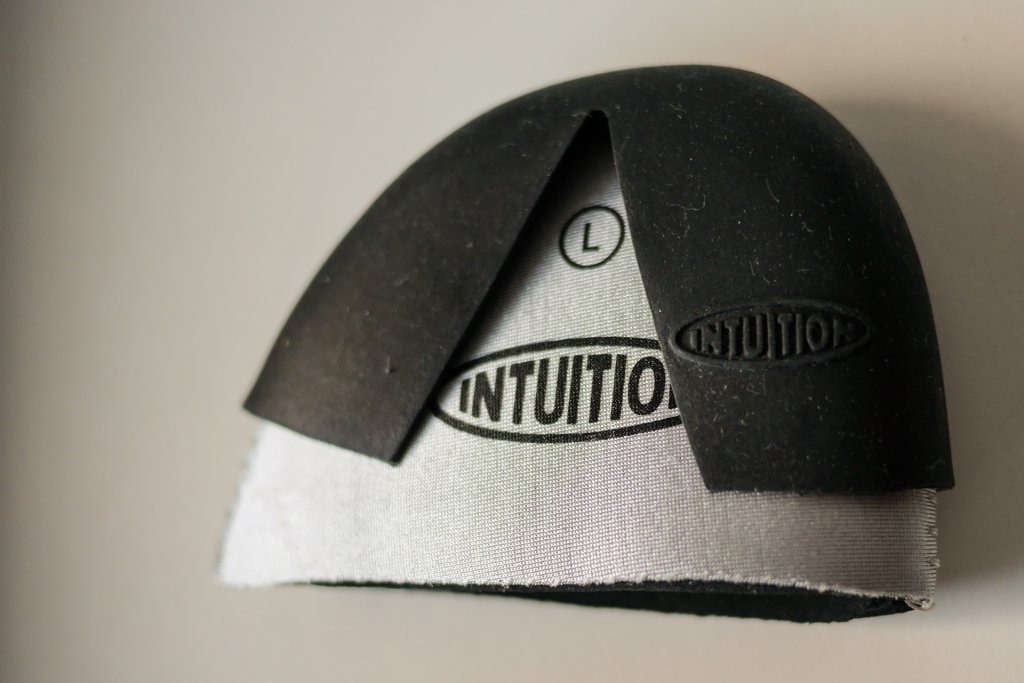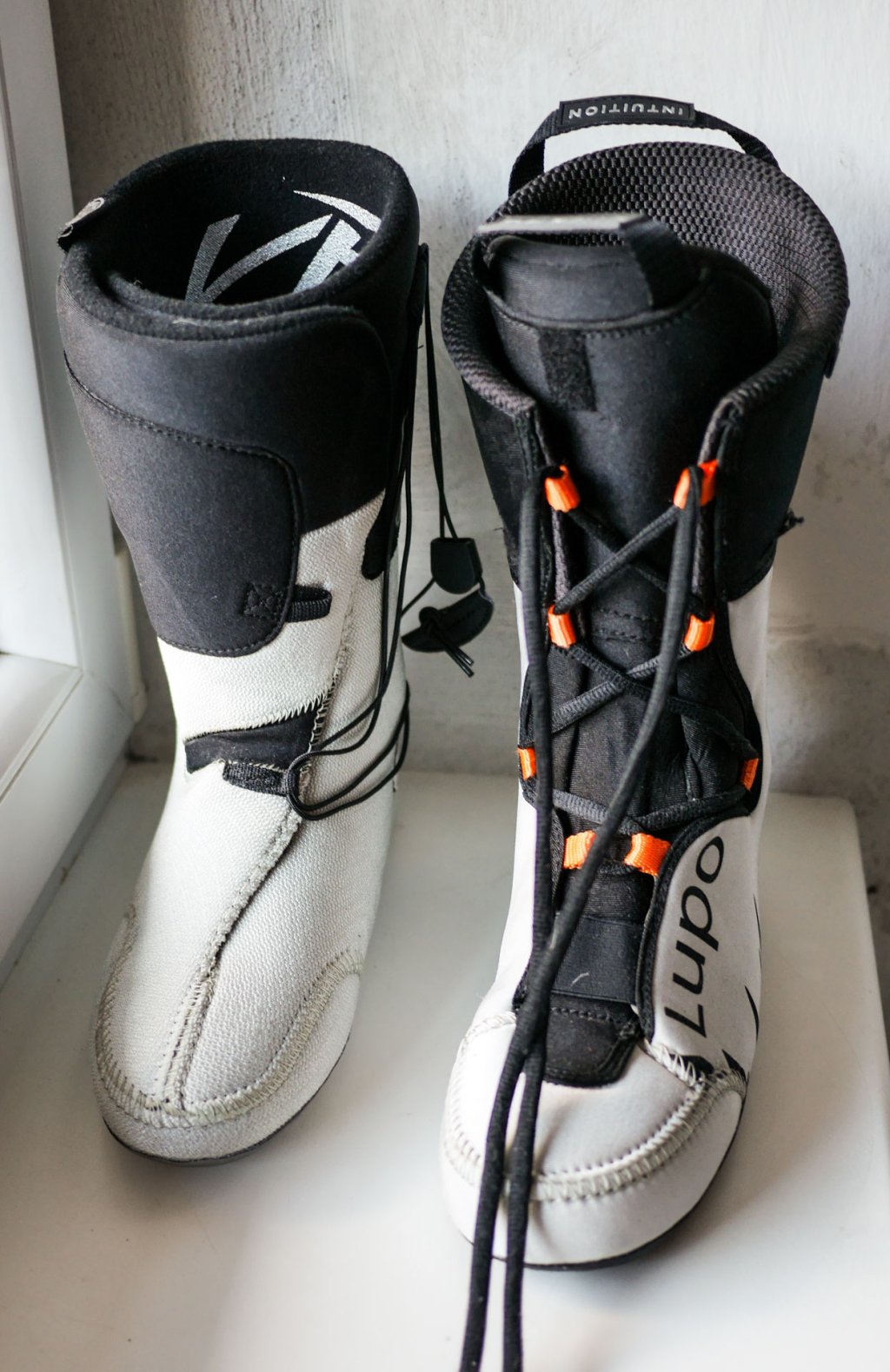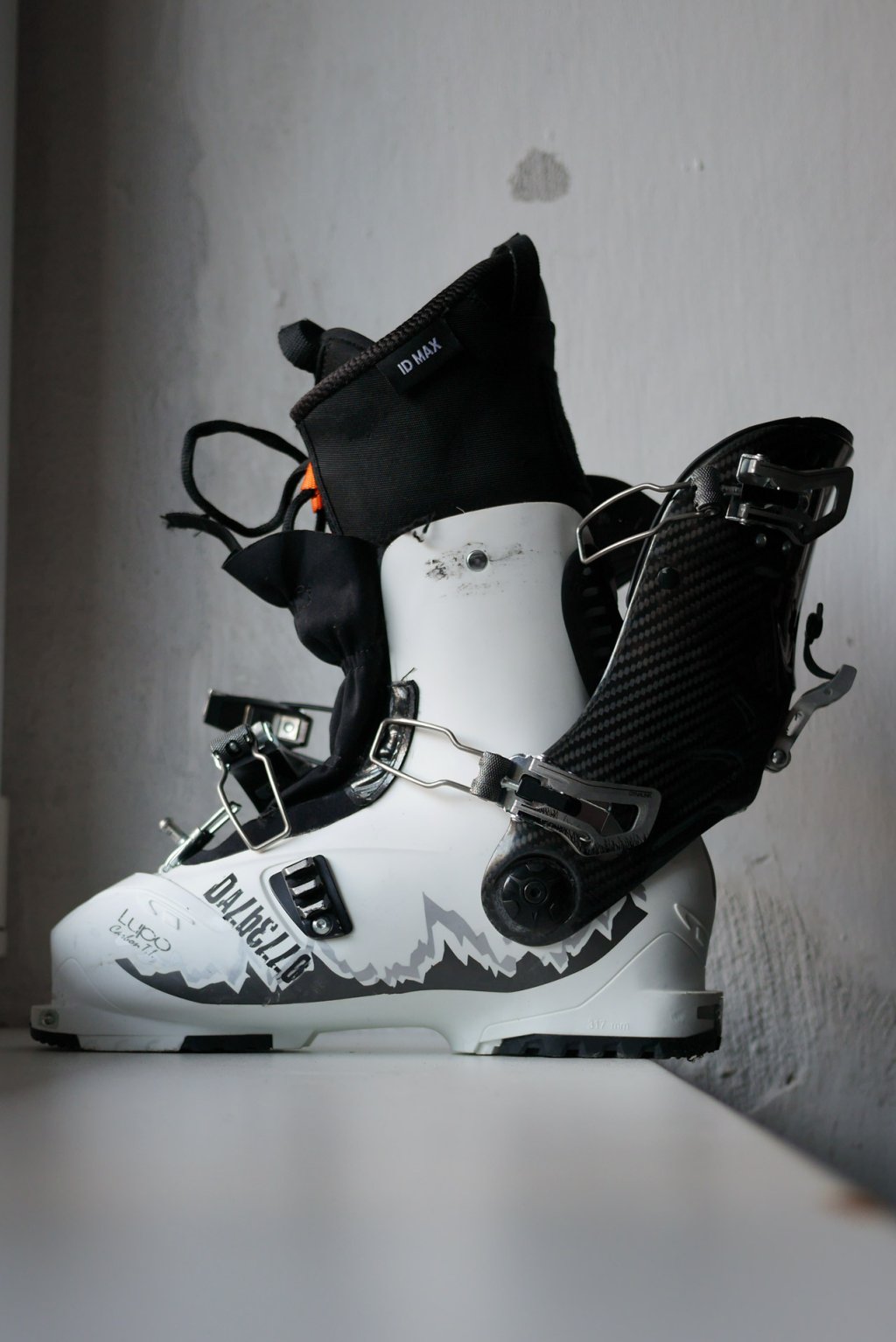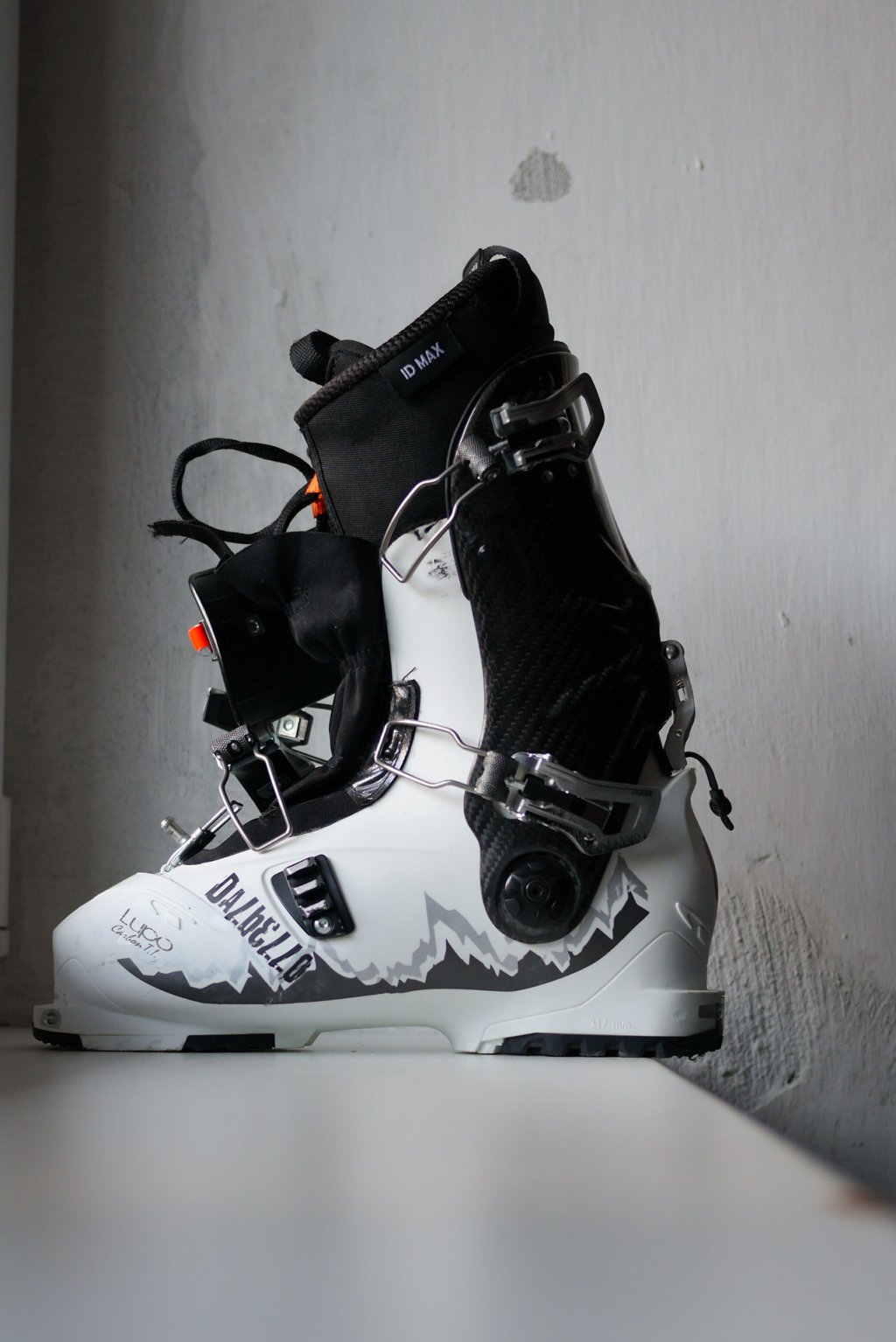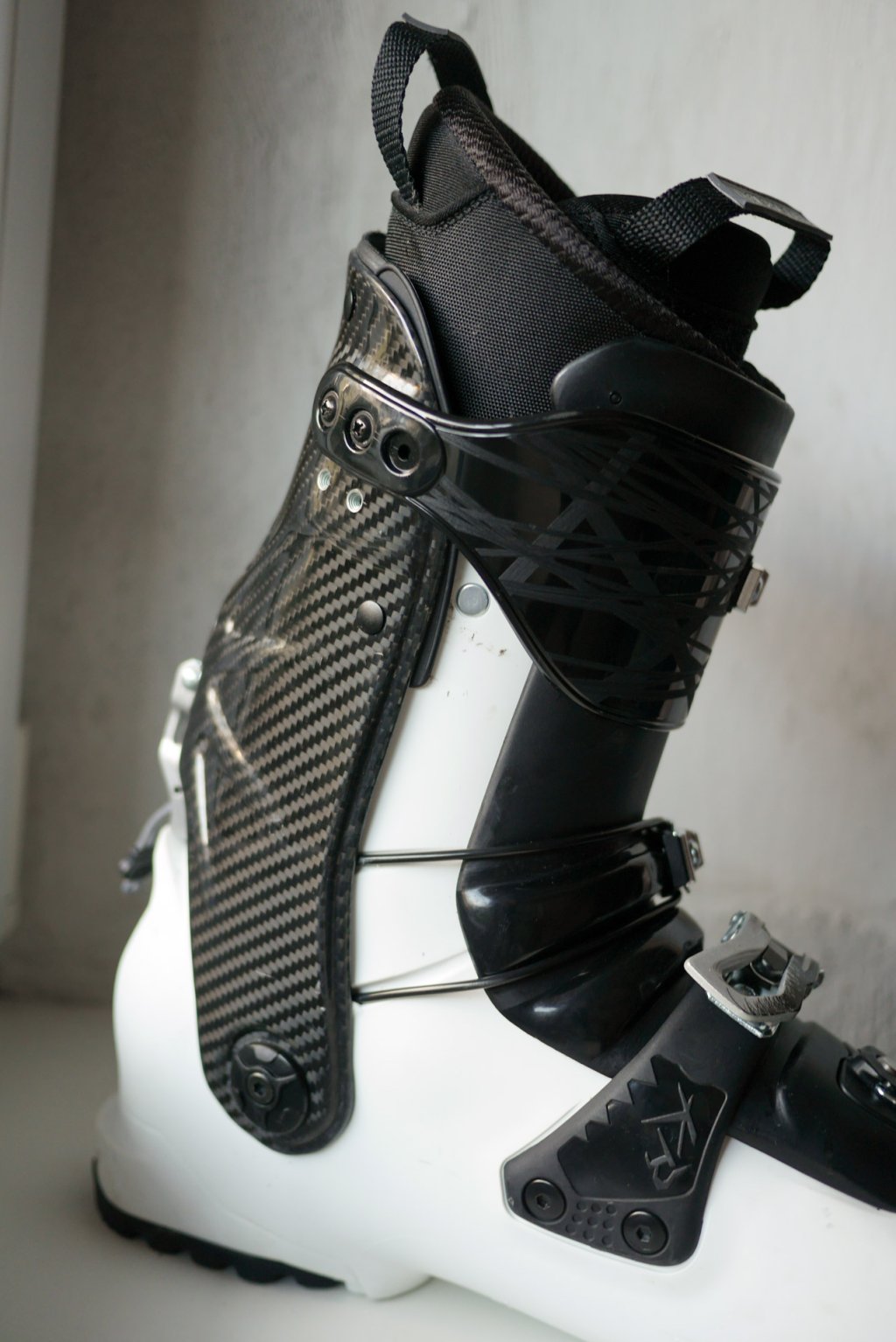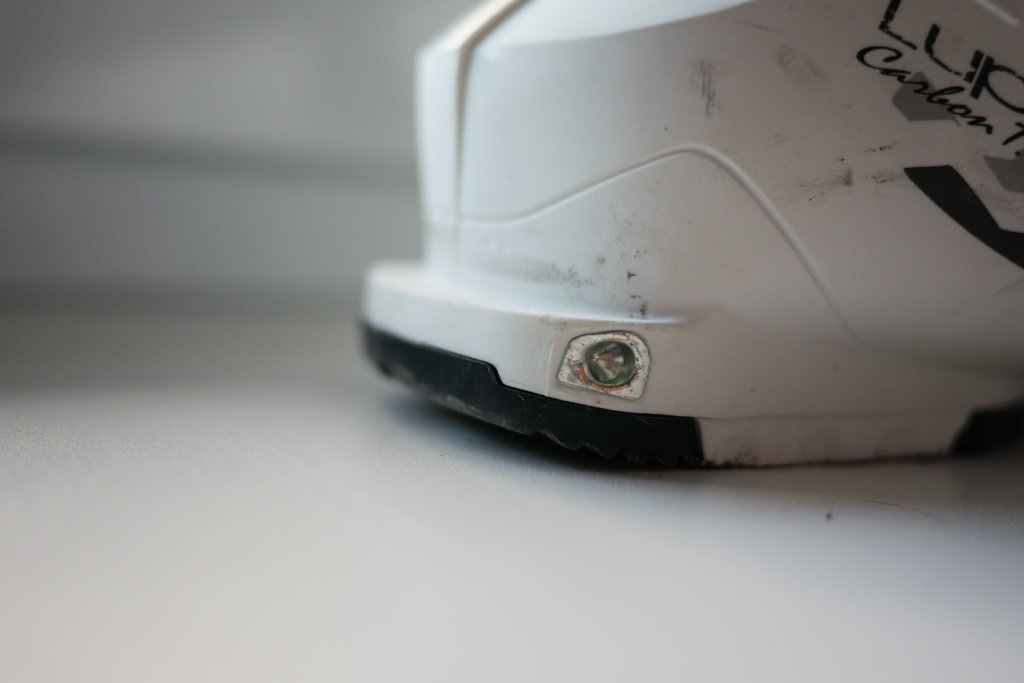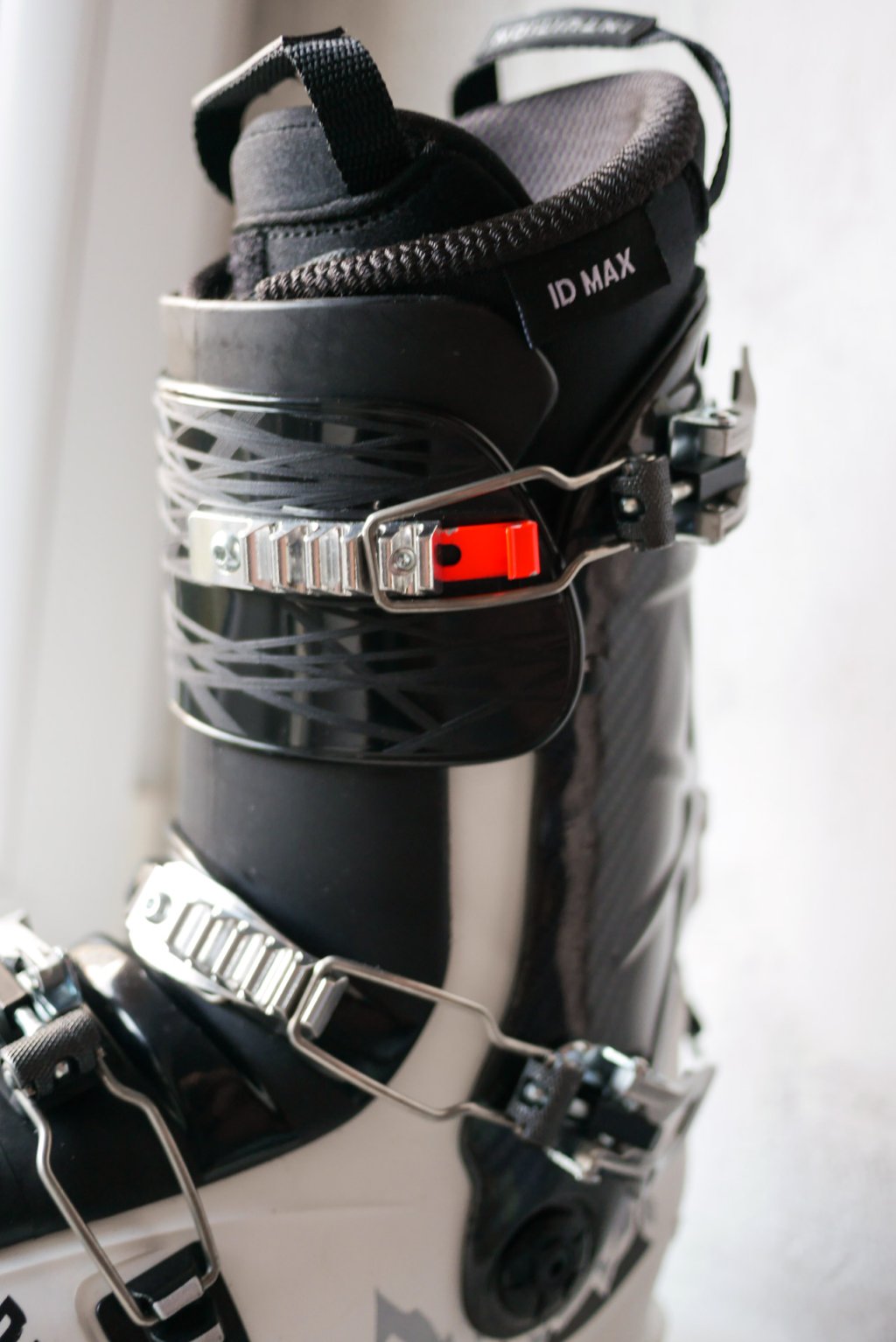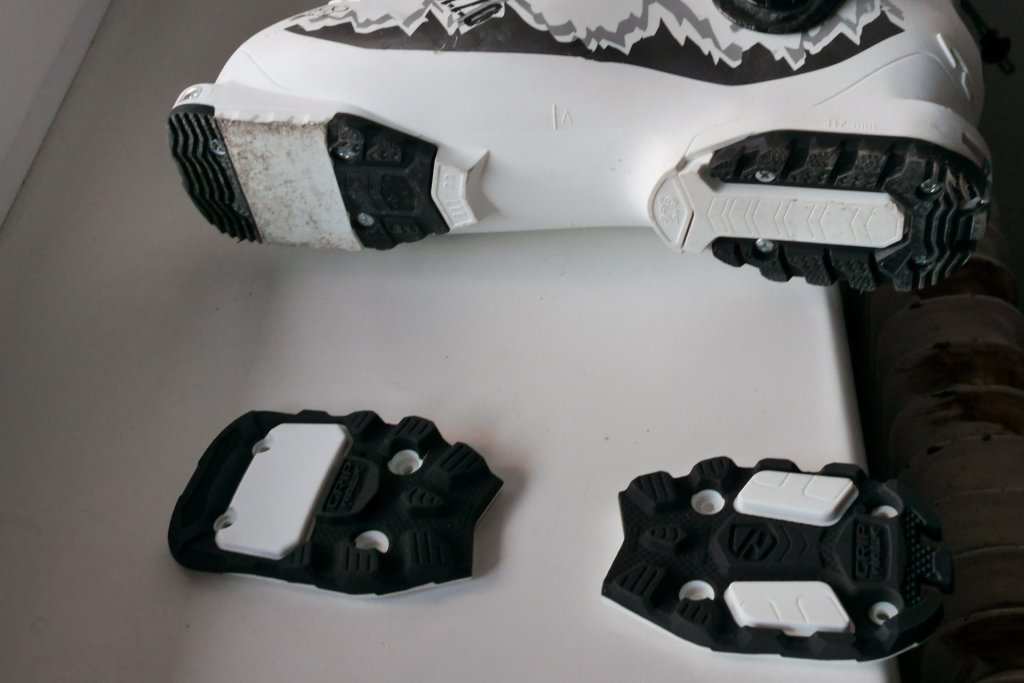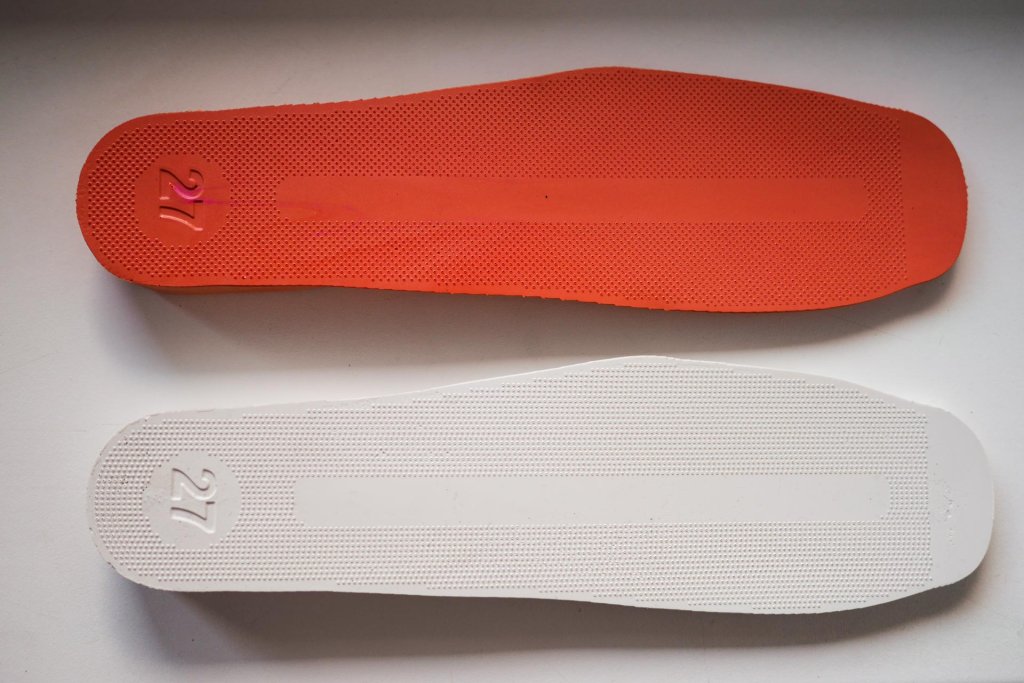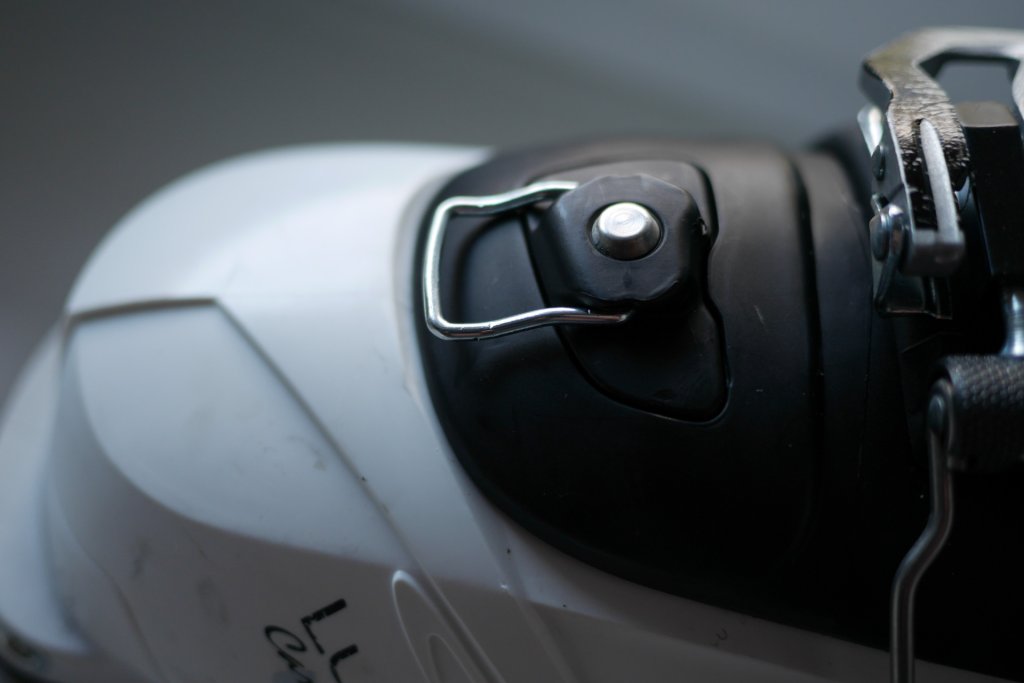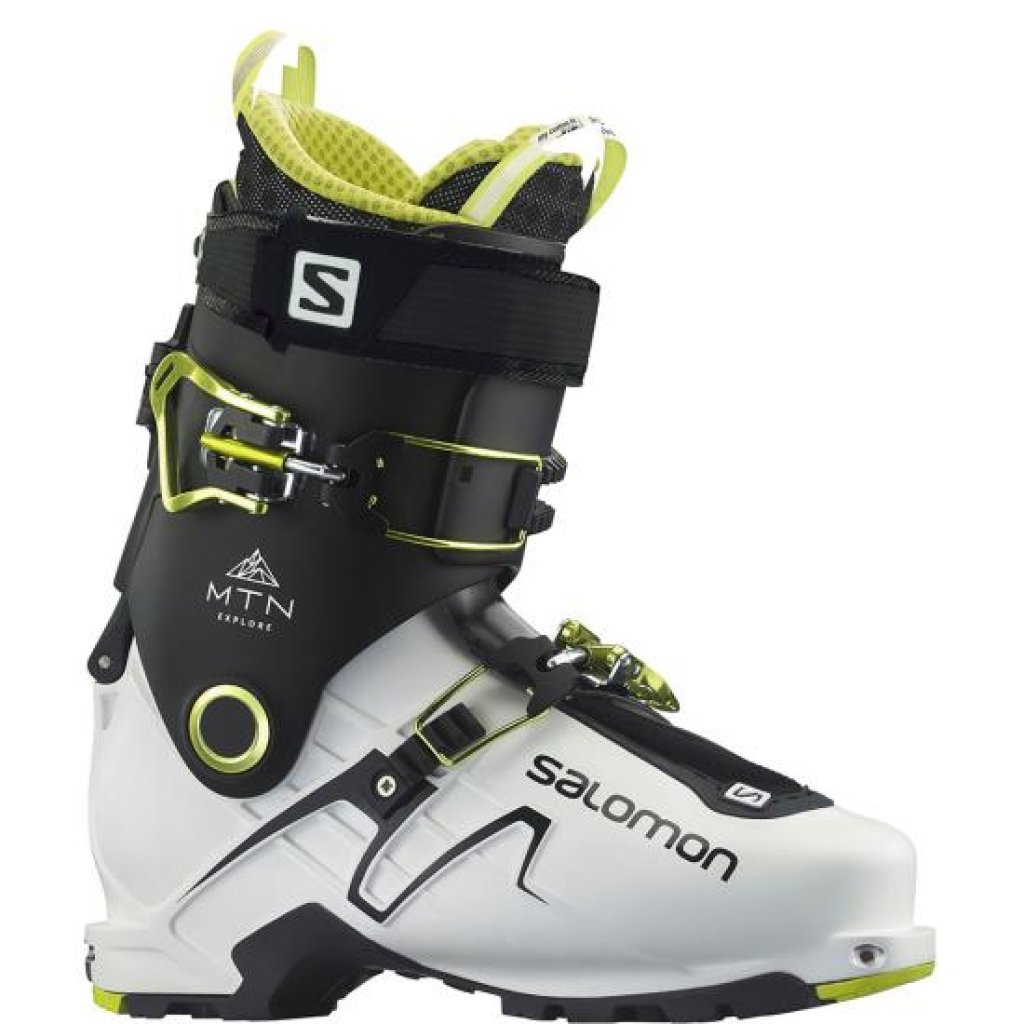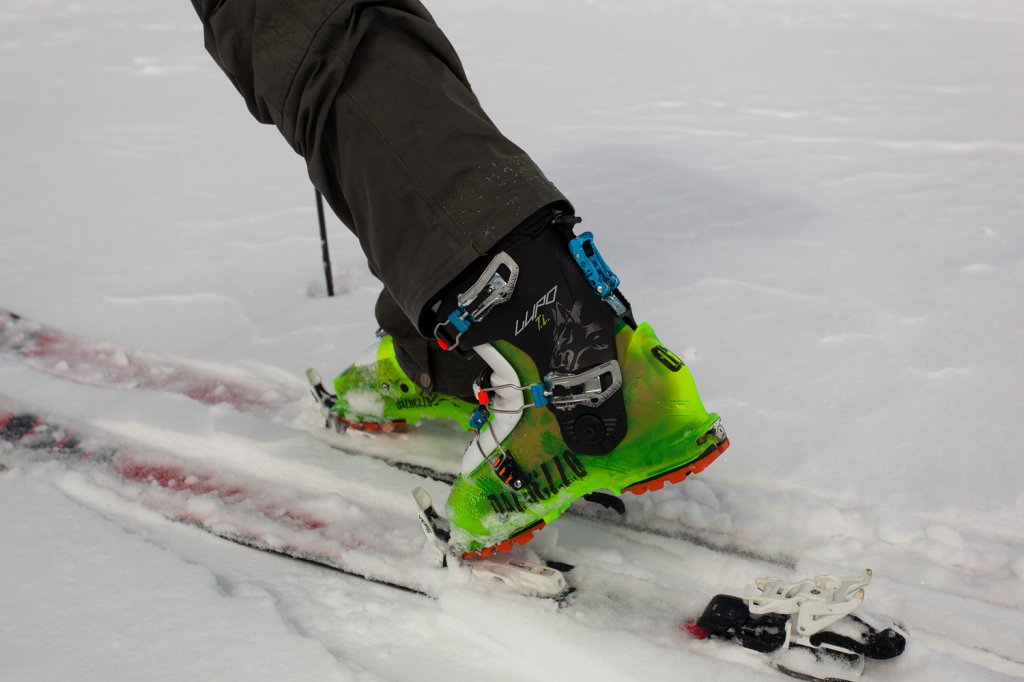With the Krypton and Lupo series, Dalbello is the only ski boot manufacturer to have consistently developed the proven, three-part ski boot concept. After initially adding a "climbing function" to the Krypton Pro (Lupo SP), tech inserts were integrated into the shell in the successor (Lupo T.I.). The latest development stage, which bears the name Lupo Carbon T.I., has an improved walking mode that has now earned its name and has a noticeably higher shaft rotation (67°). Lighter material was used for the cast plastic and the new carbon shaft replaces the usual powerstrap with only one upper buckle on a wider support. The weight with liner is specified at 1860 grams per piece, which is not necessarily very light for a touring boot, but the boot is not incredibly heavier than other models in the category of freeride ski touring boots. Dalbello didn't want to focus on lightness at all costs, but rather put stability and handling characteristics in the foreground to ensure alpine boot-like downhill performance.
Find out more about the three-piece (convertible) design and the handling characteristics of the sister model Lupo. T.I. can be found in the Firstlook and test article on the latter. After an introduction to the features, this article will focus on the noticeable differences to the Lupo T.I. In addition, a comparison will be made with "classic" ski touring boots that are in a similar category. The boot normally comes with the harder B-tongue, the hard footbeds and a Grip-Walk sole, which should fit in all standard touring bindings and WTR bindings. In contrast to the overlap liner of its predecessors, the inner boot has a tongue, but is also made by Intuition and is just as thermally adaptable. The boot is very easy to modify with accessories, so I used the slightly softer C-tongue on my test model after the first day in "factory setting", put in a softer footbed and moved the upper buckle down to attach a booster strap over it (of course, no holes were drilled through the carbon shaft). I also swapped the Grip-Walk soles for the alpine soles so that I can use the boot with all my skis/bindings at any time.
